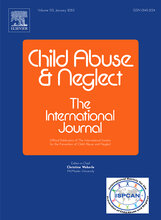Displaying 151 - 160 of 2215
This presentation is by the Children’s Trust Fund Alliance and their colleagues regarding a project they have been working on in partnership with parents to identify alternatives to CPS investigations.
Nearly a month ago, Bianca Clayborne, Deonte Williams, and their five children were on their way from Georgia to Chicago for Clayborne’s uncle’s funeral when a highway patrol officer stopped them in Manchester, Tennessee.
Although the United States joined with the U.N. in 2016 in a pledge to end child marriages by 2030, only seven states and two U.S. territories have made it illegal for people younger than 18 to get married. All other states allow it — sometimes with the permission of a parent, judge or both.
Better Care Network (BCN) is seeking a Community Outreach and Youth Engagement Specialist. The Community Outreach and Youth Engagement Specialist is responsible for ensuring effective information sharing, communication, and engagement of a wide range of stakeholders and partners as part of key inter-agency initiatives which BCN is facilitating, in particular the Transforming Children’s Care Global Collaborative.
the Fiscal & Grant Administrator is responsible for assisting in the overseeing the fiscal and procedural requirements of RPCA grants, including the development of appropriate financial controls and procedures, related procurement needs, working with pre- and post-award sponsored administration, budgeting, and financial reporting and forecasting.
The Refugee Program Manager will inform delivery of mental health and family support needs to resettled refugees in the US. The Refugee Program Manager will engage with local community resettlement agencies and other key stakeholders and partners.
Once considered a last resort reserved for parents who abandon their children, the involuntary and permanent termination of parental rights now hangs over every mother and father accused of any form of abuse or neglect — including allegations of nonviolent behavior like drug use or truancy.
This study aimed to identify components essential to building a model of care for youth involved in sex trafficking in child welfare.
Unless the treatment of a child makes headlines (for example, when a child dies), Americans rarely think about the agencies charged with child protection. So, the system that handles more than 3.5 million cases a year gets little public scrutiny, in part because the people most affected are poor.
Matthew Fletcher, a law professor at the University of Michigan, where he teaches and writes about federal Indian law and American Indian tribal law, discusses the Indian Child Welfare Act and the U.S. Supreme Court case that could weaken this law, and Native American sovereignty.

